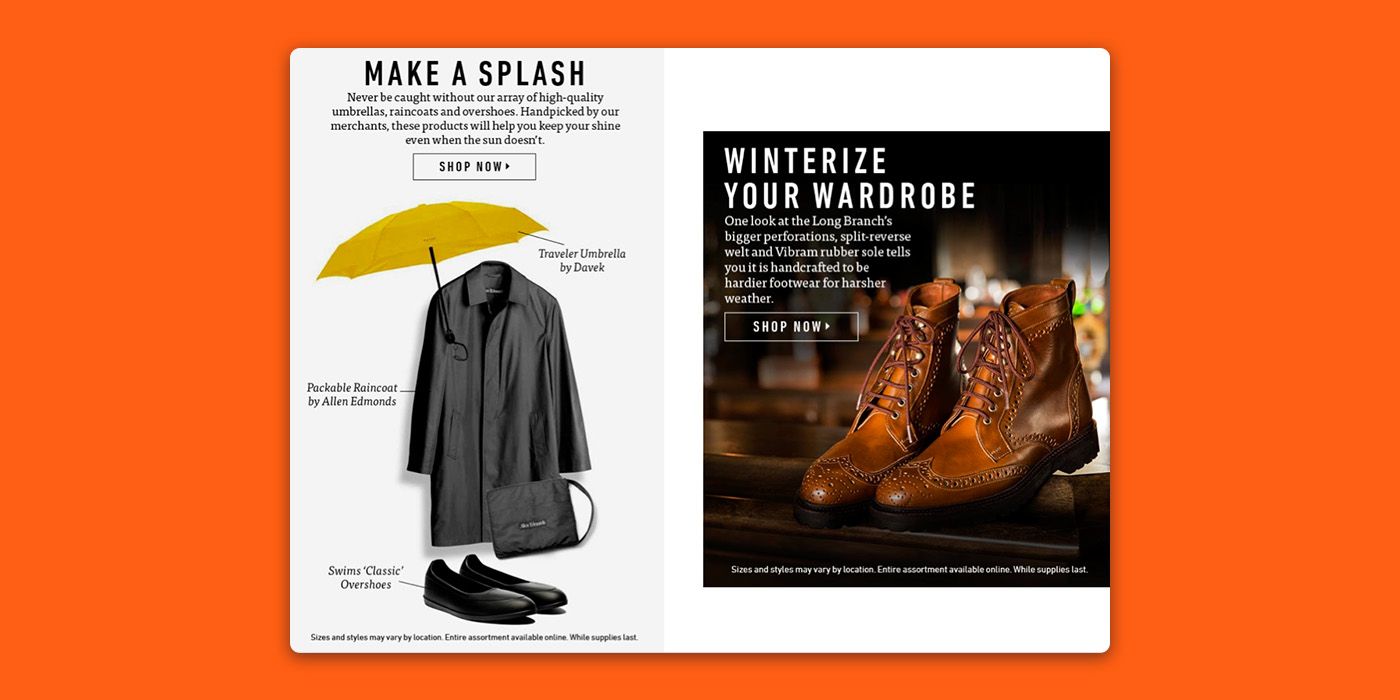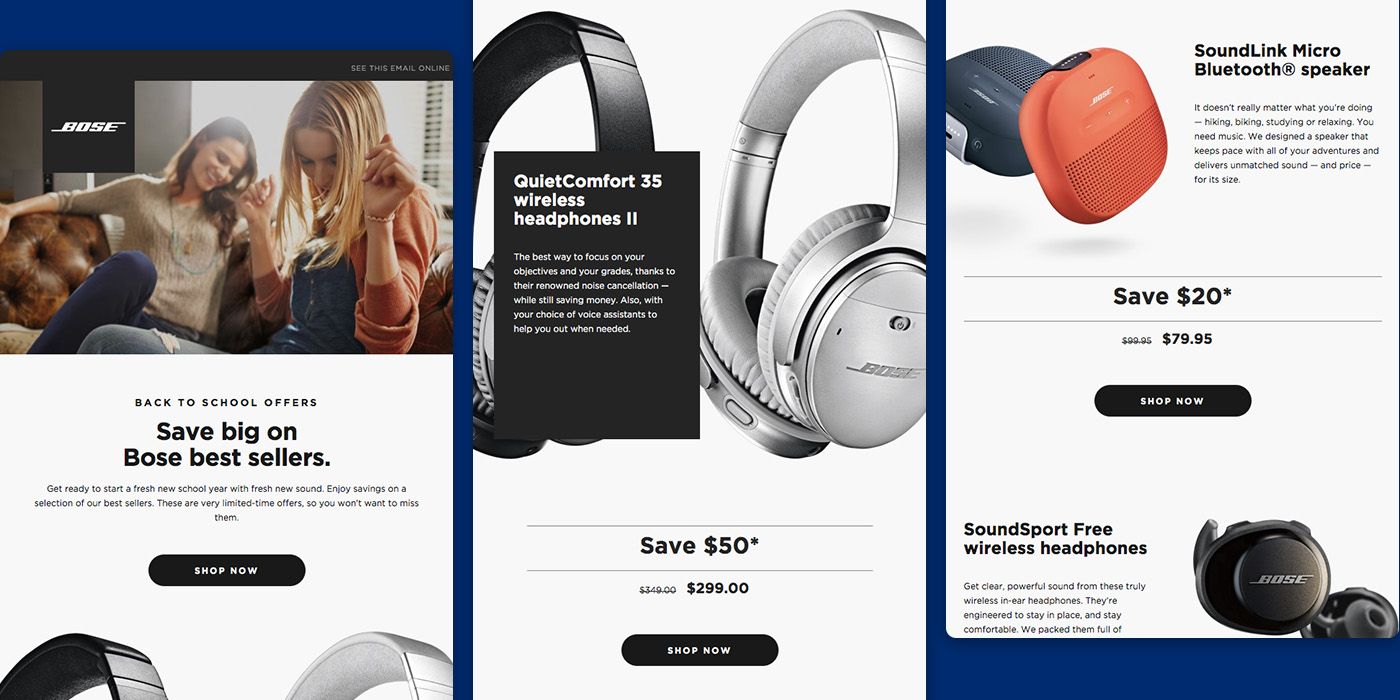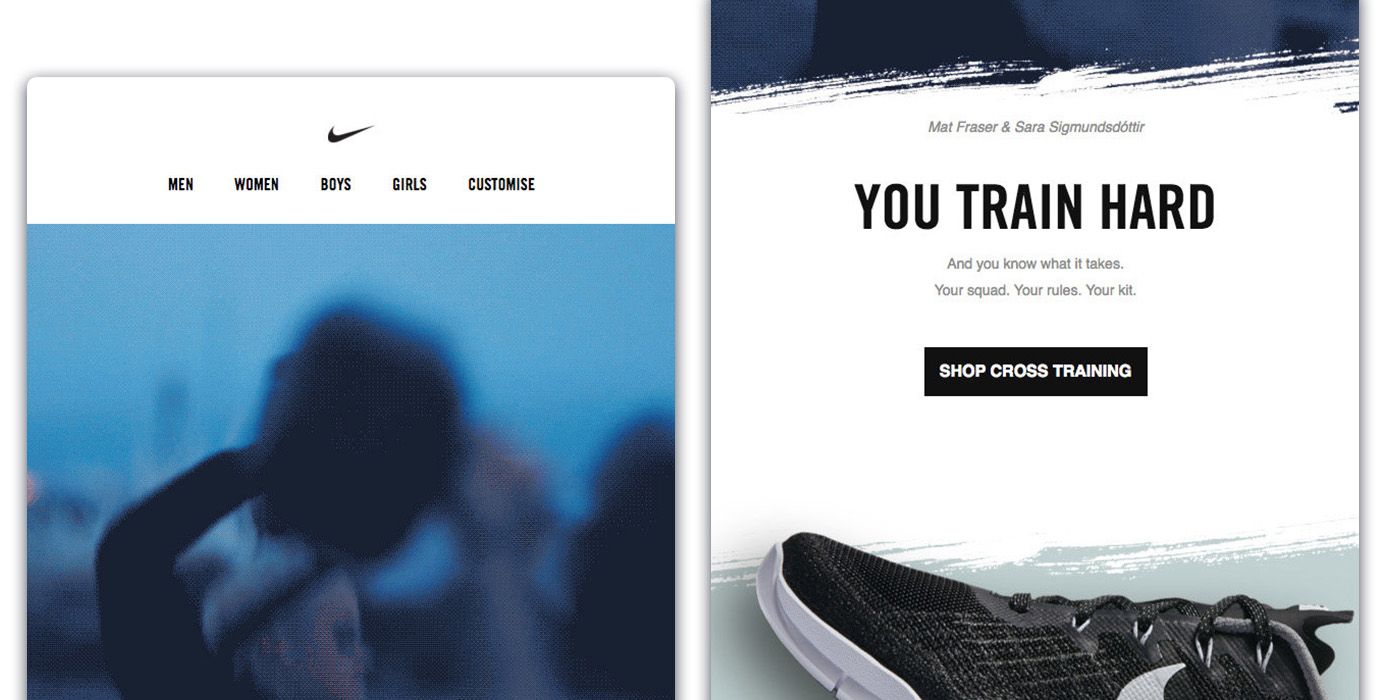Customer segments are a vital part of any e-commerce strategy. They facilitate the personalization of email marketing and ongoing engagement. Both, of course, help drive repeat orders and more sales overall.
However, most e-commerce businesses limit themselves to standard segmentation practices and engage the same customer segments over and over again. Reorder reminders, cross-sells based on previous purchase history, abandoned cart alerts are important but overused customer engagement campaigns that don’t make your brand stand out.
More niche customer segments could better connect with the audience and maximize your results. With a behavior segmentation tool, you have enough customer data to engage in a more relevant way so people feel more compelled to buy. The huge advantage of this approach is that it makes your customer focus clear and they like your brand better.
Let’s explore some of those underused customer segments and how to include them in your marketing efforts.
Segment by location

Depending on where your customers are, their shopping behavior might be very different so it’s worth tailoring your marketing based on customer location data.
You can identify customer segments by continent, country or even region to make sure your communication is relevant and timely for every recipient.
Even if you don’t sell internationally, a big country like the US or India will offer various customers and needs.
- Take climate in consideration - is it sweater weather or beach time everywhere at the same time? Offer different products that best suit the current weather at each location.
- What holidays and celebrations are observed? Maybe you can do themed promotions for some regions and avoid others that won’t be received well (like a religious holiday that people in a particular country won’t appreciate, for instance).
- Shopping habits are influenced by when the school year starts, or when most people go on vacation, or whether there’s a special wedding season happening, for example. Use customer behavior and historical data to map important shopping sprees to take advantage of.
- Location influences language, too - even English-speaking countries sometimes use different words for the same products so it’d be a nice touch to talk in their preferred terms for better customer engagement.
If you do sell internationally, all those specifics matter even more - seasons are reversed in the two hemispheres and habits differ greatly. Blanket marketing won’t get you the returns you want because too many people will receive irrelevant offers.
Splitting each campaign by location lets you tailor your offerings and messaging to better appeal to the customer. What’s more, customers know they give you first-party location data and they don’t consider it that sensitive so it is not intrusive to use it. In fact, a recent survey found that about 70% of consumers don’t mind sharing location data if there is transparency in how the data is used and how they benefit from it.
Below, you see an example of location-based email targeting. For maximum relevance, people either see the left or the right one, based on weather conditions.

Segment by coupons used
Some of the most underused customer segments are those by coupon used. Once a person converts, we marketers seem to forget about the coupon that sealed the deal. But behavior segmentation like this indisputably shows what people like and should be put to better use.
Maybe some people love free shipping coupons and wait till they hit their inbox to order. Others probably mostly shop through influencer coupon codes. If you dig deep in your customer data, you are likely to find that some people convert to discount codes for new collections or to sale coupons exclusively.
There are all important insights about their buying behavior. There’s no use pushing the same coupons to everyone when they obviously convert to different incentives.
That’s why you can create customer segments by the coupon and simply recreate the offer that worked for each one. Keep the discount and the promotions itself the same. They converted once, so chances for another order are huge.
Segment by promotions shopped
As marketers, we want to maximize the reach to increase the chances for conversion. However, this results in an avalanche of promotions, flooding the customer’s inbox. Getting a new promo every day (or sometimes more!) from a brand is confusing and counter-productive. How would people choose which one to shop?
Instead, you can do customer segmentation by the type of promotion they’ve shopped in the past:
- New in
- Final sale
- Limited-time offer
- Collaboration with another brand
- Influencer campaign
- Back to school
- A specific holiday gift promo, etc.
This past activity is quite telling - this customer has a child in school or loves the newest product, or has a mother who’s into yoga, or prefers your products in pattern rather than the regular block colors.
Giving them more of what they like is a sure-fire move. It is only logical to engage people for the next Mother’s Day or back to school campaign. If they shopped for the same reason before, they would most probably find it fitting again.
Here is an example of a smooth back to school campaign by Bose - a company that does not focus on younger customers but can reap additional sales by engaging parents in a smart way.

Re-engagement made easy
This also means you have ready customer segments to reach out to for most major shopping occasions. Instead of investing a lot of your marketing budget into ads for each big shopping event, you can draw on CRM data and re-engage already existing customers with a higher chance of conversion.
Segment by product category shopped
E-commerce segmentation can be done not only by products bought, but also by category. If you sell many products, it might be too much work to follow up on each one in a meaningful way. However, categories tell you a lot about customers, too, for engaging campaigns.
Some examples would be:
- If someone shops only fragrance-free products/ plus-size clothing/ eco-friendly items/ wooden toys, etc. - these are the customer’s special preferences and any other offers will most likely be ignored. They just would not care for petite clothes or plastic toys.
- If your product categories are divided by purpose - like different sports, for instance, it only makes sense to use this insight for upsells, cross-sells and further customer engagement.
In the example below, the customer has indicated an interest in cross training and the email offers just the most suitable products.

Your categorization can also provide huge insights about your customers without asking them uncomfortable questions. This is a great way to show empathy in your service without invading their personal space.
Categories by age group (for kids toys or clothes) or by occasion (prom, wedding guest, mother of the bride), to name a few, clearly spell out people’s needs.
Each customer segment based on category can get tailored offers, content and other marketing communication that appeals to their current interests. What’s more, you can take it from this point in the customer’s life and help them in the next situation along the way: for example, after someone buys baby clothes, they naturally need toddler products, then children’s and so on. You can retain those customers for as long as possible through carefully tailored engagement.
Segment by content consumed
One very underestimated customer segmentation clue is the content marketing consumed. This includes articles on your blog, videos, interactive tools you have on the site, quizzes, guides and glossary, email newsletter - any content you own and can measure.
Engaging with your content is a sign of interest - people are considering your brand. And the content that grabs their attention directly shows what they are interested in: your sizes, your influencer collaborations, new products, manufacturing process, materials, how to take care of the goods, etc.
What people read (or watch) tells you what their concerns are and how you can convert them. Give them more details on the topics they are interested in - a special email with comprehensive info about your supply chain for the ethically minded ones and another with measuring instruction for the insecure about fit ones.
This customer segmentation is also useful post-purchase when you need to continue the line of engagement to reinforce the choice they have made and drive another order. Divide your blog readers into smaller segments and personalize the updates they get to keep them interested.
Bonus segment: The best lookalike audiences
Customer segments are useful not just for email marketing. Your Facebook ads can also get much better if you reach the right audience. Why should you spend your marketing budget on ads that don’t bring in quality leads? The most qualified leads turn into loyal and long-term customers.
That is why we suggest you identify your best customers:
- who shop most frequently;
- who place very big orders;
- who have the highest customer lifetime value.
Model your lookalike audience on them to get more people like them. It might be hard to pinpoint what exactly makes those people your ideal customers so letting the algorithm do its magic will help. So simple, yet so effective!
In conclusion
E-commerce segmentation can work with any kind of customer data you have, that’s the beauty of it. When you need opportunities for customer engagement, any behavior can be a trigger. The more varied triggers you use, the more diverse and relevant your marketing will be.
This is a guest post by Dimira Teneva.
About author:
Dimira Teneva writes to share the best insights and practices from her daily work with ecommerce businesses. She is part of Metrilo, an ecommerce analytics, CRM and email platform that helps online brands grow through data and customer retention.
✍️ Want to write for us? Check out our guest blogging guidelines here.




